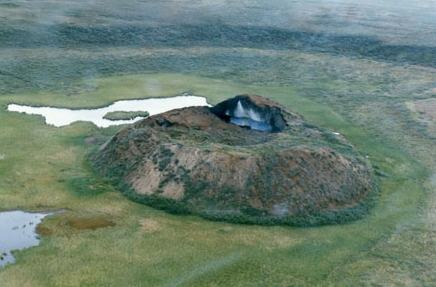Periglacial geomorphology is the study of landforms and processes that are influenced by frost and ice in regions near the edges of glaciers or ice sheets. This branch of geomorphology helps us understand how ice shapes the landscape in these cold environments.
Ice Wedging: The Forces of Frost
One of the key processes in periglacial geomorphology is ice wedging. This occurs when water seeps into cracks in rocks, freezes, and expands, causing the rock to break apart. Over time, repeated cycles of freezing and thawing can lead to the formation of boulder fields, talus slopes, and other distinctive landforms.
Solifluction: The Creep of Frozen Soil
Solifluction is another important process in periglacial regions. This occurs when the active layer of soil above the permafrost thaws during the summer, becoming saturated with water. The frozen permafrost below acts as a barrier, causing the waterlogged soil to slowly creep downhill. This movement of soil can create distinctive landforms such as lobes, terracettes, and solifluction lobes.
Patterned Ground: The Mysterious Mosaics of Frost
Patterned ground is a common feature in periglacial regions, where frost action creates distinctive patterns on the landscape. These patterns can include stone stripes, polygonal ground, and circles of vegetation. The formation of patterned ground is complex and can involve a combination of processes such as frost heaving, ice segregation, and solifluction.
Cryoplanation: The Carving Power of Ice
Cryoplanation is a process where ice shapes the landscape through erosional processes. This can include the formation of cirques, rock basins, and other glacial landforms. Over time, cryoplanation can carve out deep valleys and shape the topography of periglacial regions.
By studying periglacial geomorphology, scientists can uncover the mysteries of how ice shapes the landscape in cold environments. Understanding these processes is crucial for predicting how the landscape will change in the future as temperatures continue to rise and periglacial regions shift and evolve.

